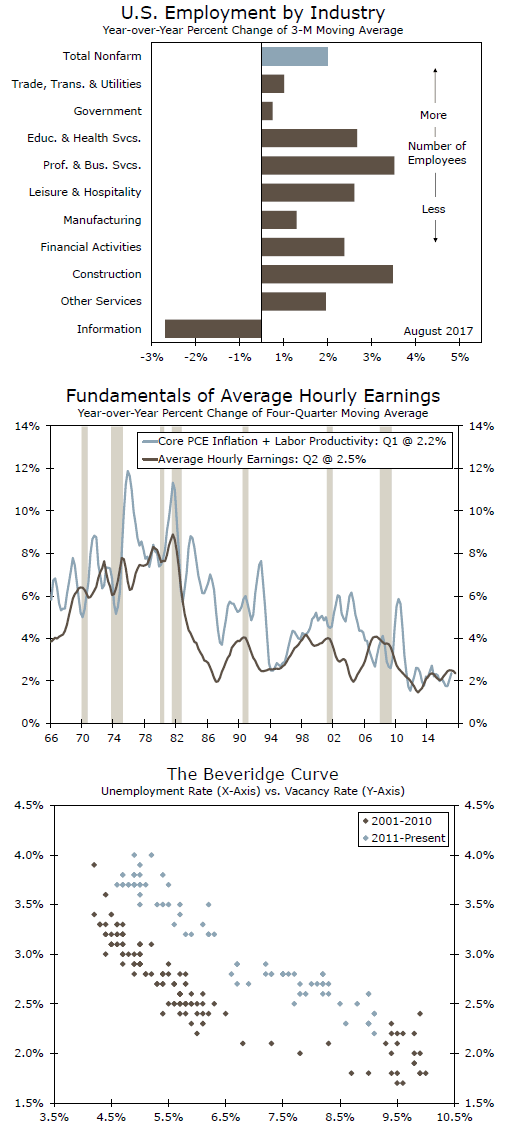August job gains of 156,000 and a steady rise in wages indicate continued economic growth and consumer spending. Hurricane Harvey hits next month’s data. Past the cycle, structural unemployment issues remain.
August Jobs Up 156,000: Consistent with Economic Growth
Nonfarm payrolls rose 156,000 in August, with the three month average at 185,000 jobs. Job gains are consistent with 2.5 percent economic growth in the third quarter, steady consumer spending and Fed policy as currently projected for a December rate hike.
Hiring in the services sector remained solid, with gains in business services, education & health, finance and leisure & hospitality (top graph). Government jobs have declined on average 6,000 jobs over the past three months.
In the goods sector, manufacturing employment posted a strong gain (28,000) over the past three months, while hiring in construction was up a still solid 13,000 jobs on average over the past three months.
Wage Growth: Real Wage Gains Over the Past Two Years?
Despite the focus on nominal wage gains, the real story for the American household is that real wages continue to rise and thereby boost household real incomes and consumer spending.
Nominal average hourly earnings rose 0.1 percent in August and are up 2.5 percent over the year. While job growth remains strong, earnings continue to hang in this mid-two percent pace. The softer inflation readings and weak productivity numbers have limited the gains in nominal wage growth.
Over the longer run, wages reflect the economic fundamentals of the labor market, and those fundamentals include productivity and inflation (middle chart). Lackluster productivity growth in the current cycle has weighed on wage growth and will likely continue to hamper wage appreciation. Moreover, inflation has been persistently below the FOMC’s target of two percent and has struggled to sustain upward momentum. With both productivity growth and inflation continuing to prove sluggish, it is not altogether surprising that wage growth has disappointed given the performance of the fundamentals.
Structural Problems Persist: Drag on Growth
For any given unemployment rate (labor supply) the vacancy rate (job openings) remains wider than in the prior ten year period (bottom graph). This Beveridge Curve signals a structural weakness in the labor market which is confirmed by several labor market survey indicators. Compared to a year ago, the unemployment rate for those without a high school education and with a high school diploma remains higher than the unemployment rate for those with some college.
The mean duration of unemployment rate remains at 24.4 weeks which is higher than any level since 1982. Finally, the prime age labor force participation rate has risen over the last year but remains far below the level of participation since 1990.














